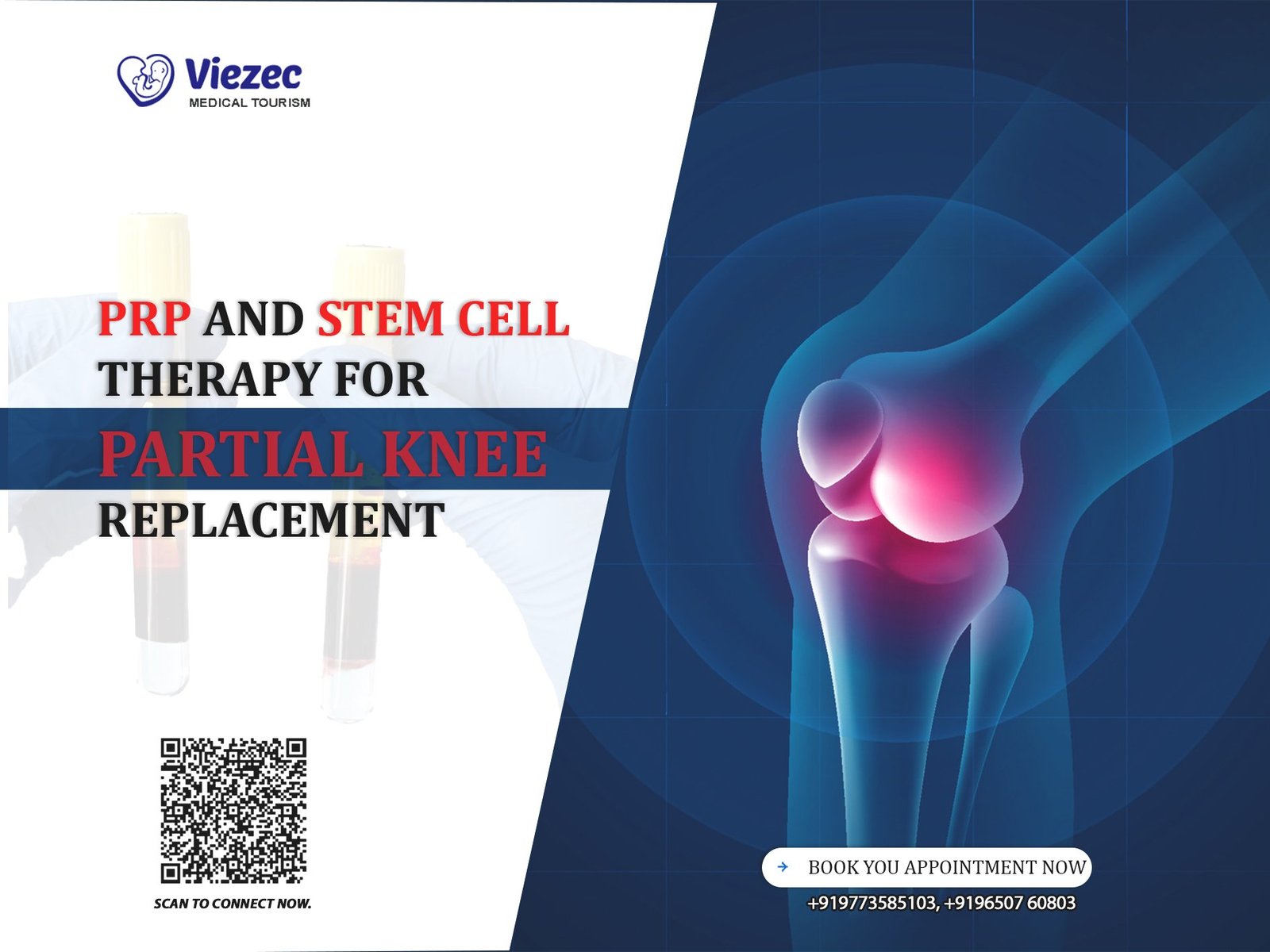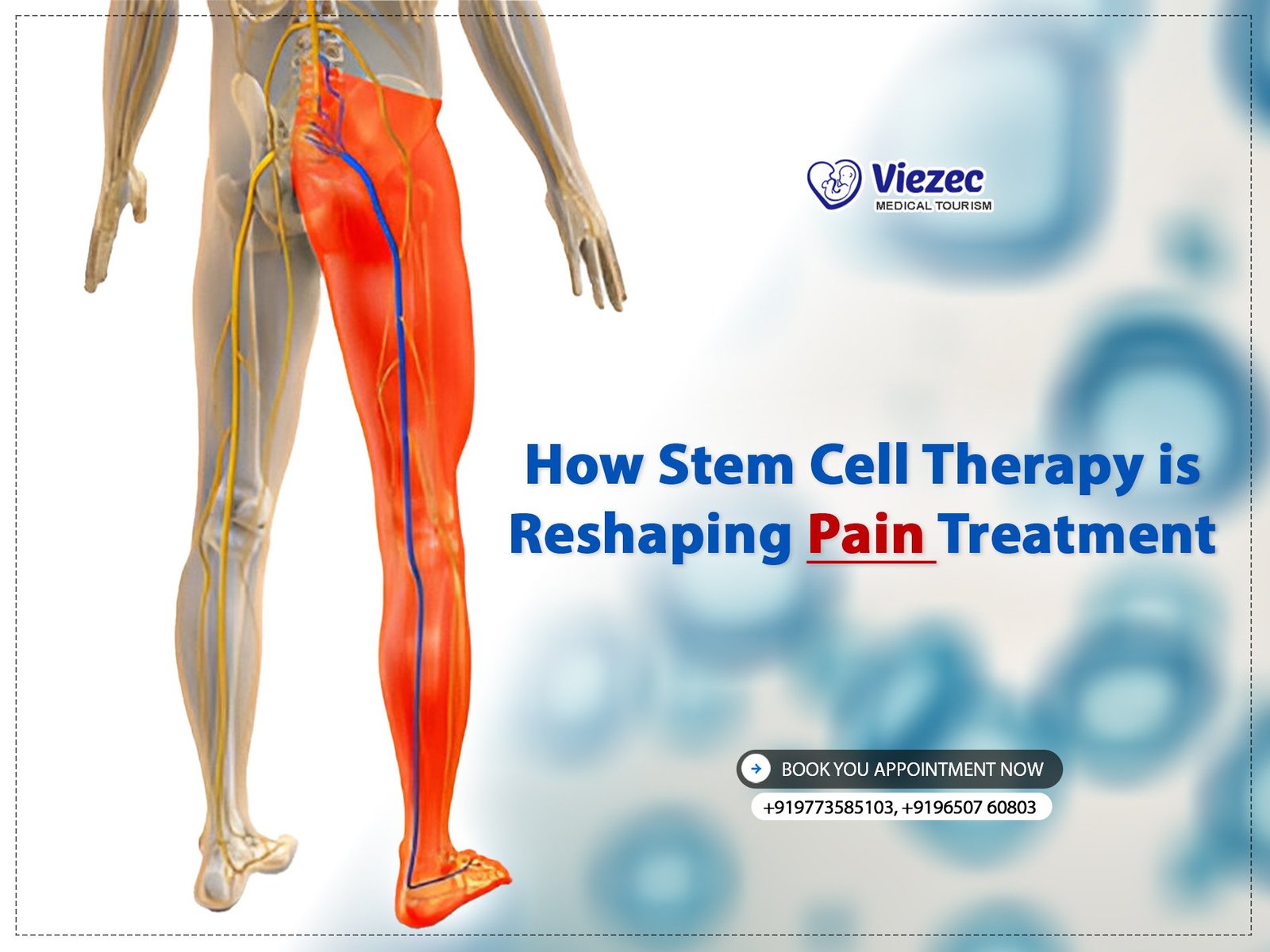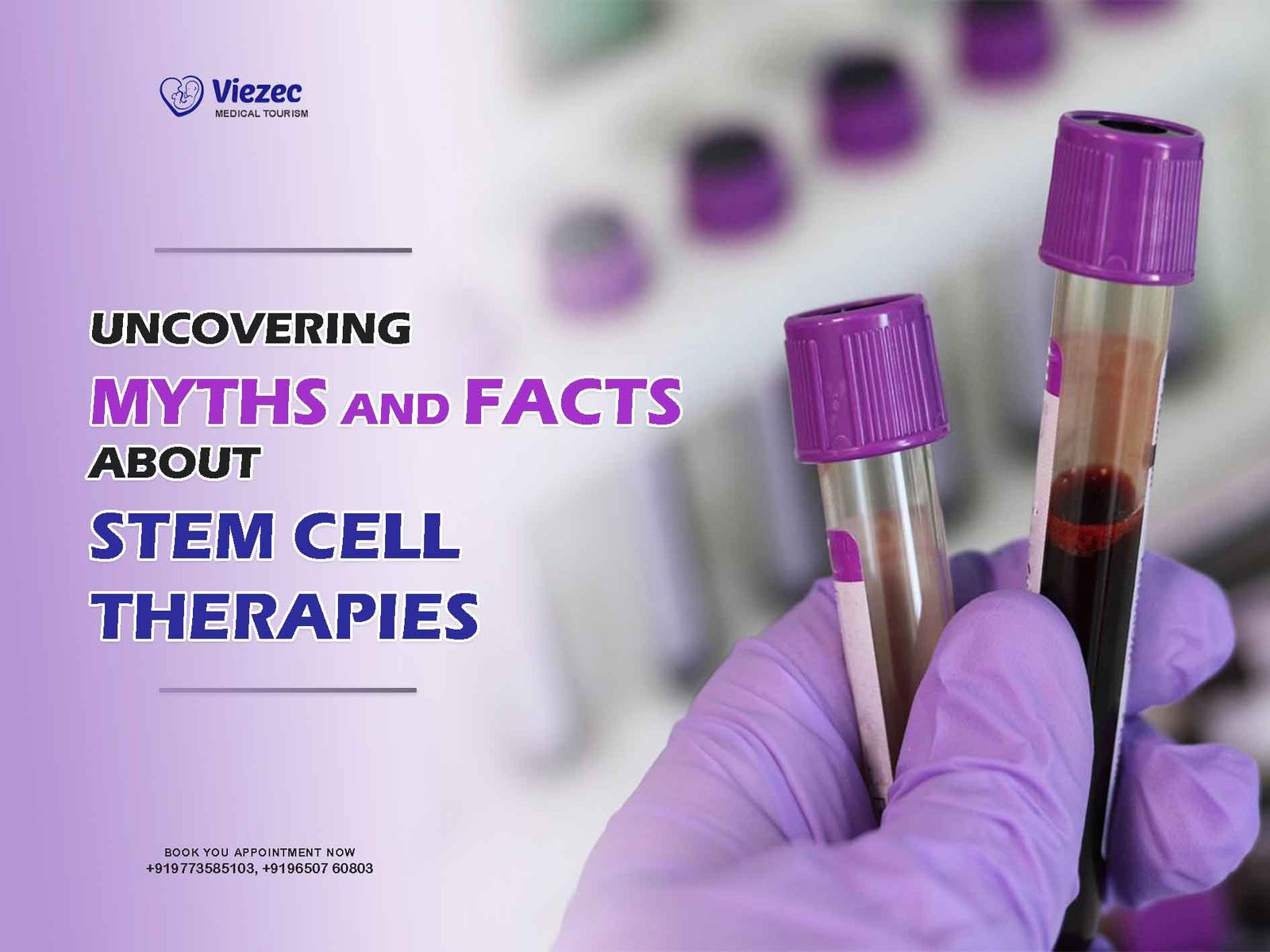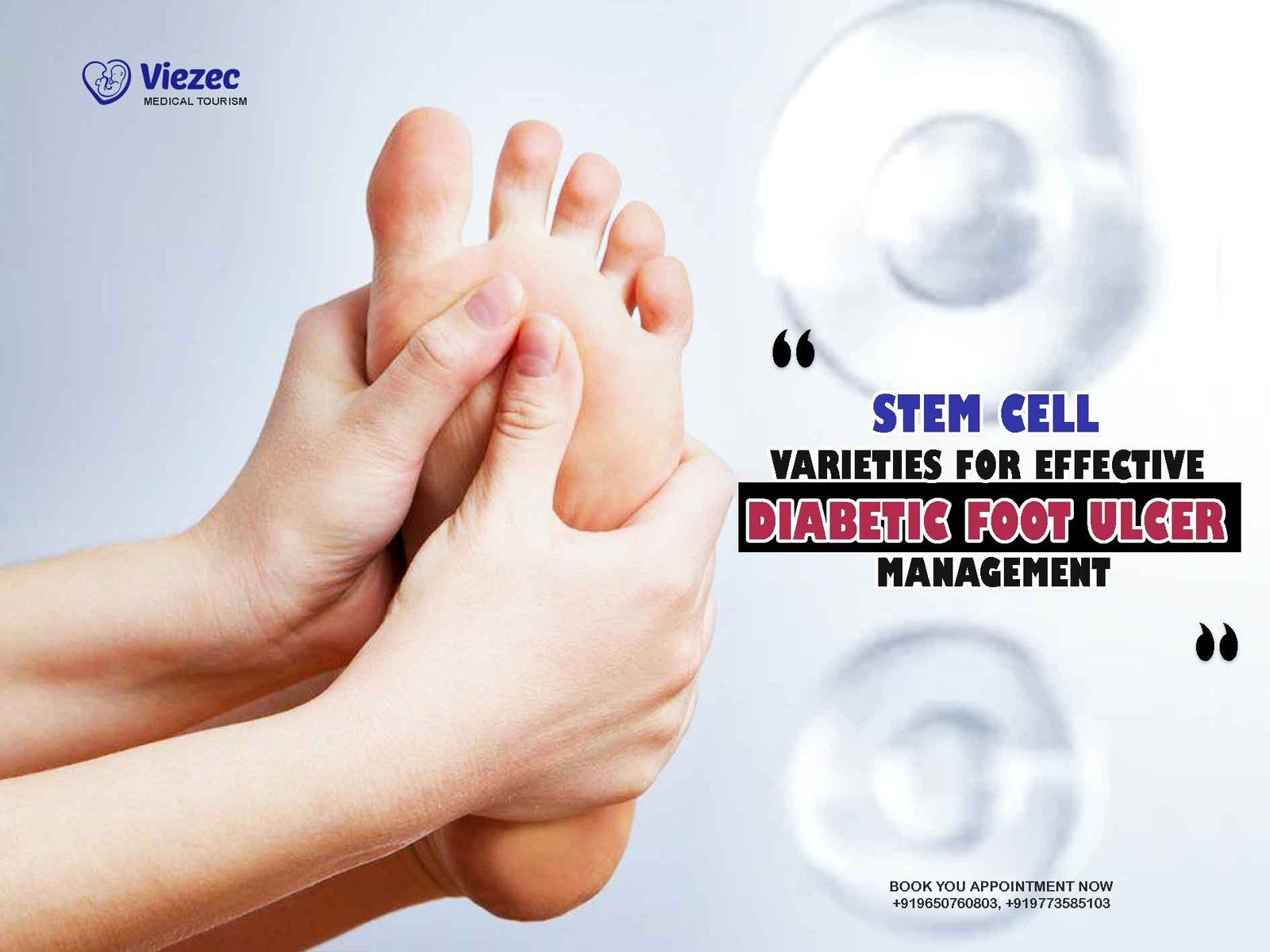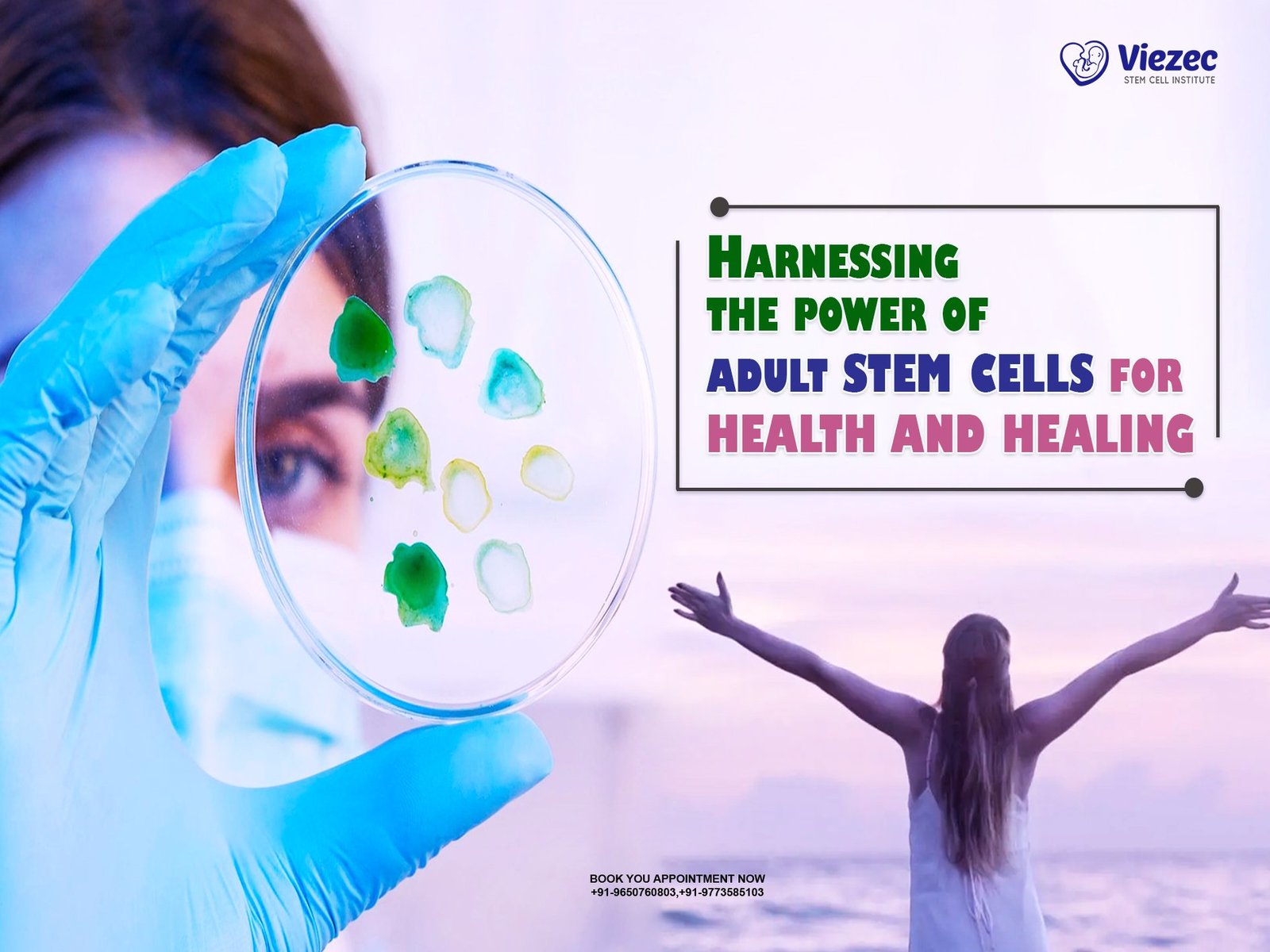Partial knee replacement has long been a go-to solution for patients suffering from localized joint degeneration. However, emerging regenerative therapies like Platelet-Rich Plasma (PRP) and stem cell therapy are now offering powerful, non-surgical alternatives. This article explores how these cutting-edge treatments can help reduce pain, restore knee function, and potentially delay or avoid surgery altogether.
You’ll learn how PRP and stem cells work, their differences, how they complement each other, and what real-world results look like. With expert insight from providers like Viezec, a trusted name in regenerative medicine, we also guide you through what to expect during treatment, cost comparisons, and how to choose the right clinic.
Whether you’re seeking to avoid surgery or simply want a smarter, more natural approach to joint health, this comprehensive guide reveals why regenerative therapy may be the future of knee care.
Understanding Partial Knee Replacement
What Does Partial Knee Replacement Involve?
Partial knee replacement, also known as unicompartmental knee replacement, is a surgical procedure where only the damaged portion of the knee joint is replaced. Unlike total knee replacement, which involves resurfacing the entire joint, this minimally invasive option focuses on preserving as much of your natural bone, cartilage, and ligaments as possible.
Surgeons typically target one of the three compartments of the knee—medial (inside), lateral (outside), or patellofemoral (front)—using precision techniques and biocompatible materials such as metal and medical-grade plastic. This allows for more natural joint movement, quicker recovery, and a smaller surgical footprint.
Common Causes That Lead to This Procedure
Partial knee replacement is often recommended for patients dealing with localized damage in a specific part of the knee. Common contributing factors include:
-
Unicompartmental osteoarthritis – where degeneration is confined to one compartment
-
Past trauma or injury – leading to uneven wear and joint dysfunction
-
Degenerative joint diseases – such as rheumatoid arthritis (in localized cases)
-
Persistent knee pain – unresponsive to physical therapy, medications, or injections
When conservative methods no longer provide relief, and the damage is not widespread enough for a total knee replacement, partial knee surgery becomes a targeted and effective solution.
Exploring Non-Surgical Alternatives
Why Regenerative Medicine Is Gaining Popularity
In recent years, regenerative medicine has sparked a quiet revolution in orthopedic care. Rather than simply managing pain or replacing damaged joints with artificial materials, regenerative therapies like Platelet-Rich Plasma (PRP) and stem cell therapy aim to heal and rebuild tissues from within.
Patients are increasingly drawn to these innovative treatments for several reasons:
-
Natural healing – They utilize the body’s own biological materials.
-
Minimally invasive – Involves injections instead of surgery.
-
Fewer risks and complications – No general anesthesia or hospital stays.
-
Shorter recovery time – Most patients resume normal activities within days.
As a result, regenerative therapies are now being viewed not just as last-resort options, but as proactive alternatives to delay or avoid invasive procedures like partial knee replacement.
Ready to take the next step towards recovery? Book your appointment today!
Can PRP or Stem Cells Postpone Surgery?
Absolutely—numerous studies and clinical experiences suggest that PRP and stem cell treatments can postpone, or even eliminate, the need for partial knee replacement, especially in the early to moderate stages of joint degeneration.
These therapies work by:
-
Reducing chronic inflammation
-
Stimulating the repair of damaged cartilage
-
Improving joint lubrication and mobility
While results can vary based on the severity of the condition, patient health, and lifestyle, many individuals experience significant pain relief and improved knee function—sometimes lasting months or even years. In ideal scenarios, patients have successfully delayed surgery for several years or avoided it entirely.
What Is PRP Therapy?
How Platelet-Rich Plasma Is Prepared
Platelet-Rich Plasma (PRP) therapy harnesses your body’s own healing power. The process is simple yet scientifically sophisticated:
-
A small amount of your blood is drawn.
-
It’s then spun in a centrifuge to separate the platelets from other components.
-
The resulting golden serum—rich in platelets and growth factors—is injected directly into the affected area of your knee.
This concentrated plasma contains powerful biological signals that trigger repair responses in your tissues, encouraging healing where degeneration or inflammation exists.
Its Role in Healing Cartilage and Soft Tissue
PRP doesn’t just mask pain—it supports actual healing and restoration.
Here’s how it helps the knee joint:
-
Reduces inflammation by neutralizing inflammatory mediators.
-
Stimulates cartilage cell production and slows breakdown.
-
Improves circulation to nourish tissues and remove waste products.
-
Speeds up healing of ligaments, tendons, and soft tissue structures.
PRP’s regenerative properties make it especially valuable for patients with early-stage osteoarthritis, meniscus tears, or post-injury recovery.
Advantages of PRP for Knee Joint Support
-
Minimally invasive: No incisions—just a few simple injections.
-
Quick recovery: Many patients return to activity within 24–48 hours.
-
Low risk: Since it’s derived from your own blood, there’s virtually no risk of rejection or allergic reaction.
-
Promotes long-term relief: Instead of masking pain, PRP supports actual tissue regeneration.
When used early, PRP can be a powerful tool to reduce pain, restore function, and delay the need for surgery.
What Is Stem Cell Therapy?
Types of Stem Cells Used in Orthopedic Treatment
Stem cell therapy takes regenerative medicine a step further by using the body’s master repair cells—stem cells—to rebuild and regenerate damaged tissue. In orthopedic care, the most commonly used stem cells are mesenchymal stem cells (MSCs). These are harvested from three primary sources:
-
Bone marrow – Typically extracted from the hip bone.
-
Adipose (fat) tissue – Collected through a minor liposuction procedure.
-
Umbilical cord tissue – Donor-derived and screened for safety (used in some advanced clinics).
Each of these sources provides stem cells capable of transforming into key joint components—like cartilage, bone, and muscle tissue—making them ideal for knee repair.
Mesenchymal Stem Cells (MSCs) and Their Function
MSCs are like the body’s own construction crew. Once introduced into a damaged area, they get to work by:
-
Reducing inflammation that worsens joint degeneration.
-
Replacing damaged or lost cartilage cells.
-
Stimulating the growth of new blood vessels and tissue structures.
-
Releasing healing factors that activate surrounding cells to aid recovery.
Unlike medications or even PRP, stem cells don’t just manage symptoms—they aim to reverse the underlying damage.
How Stem Cells Repair and Regenerate Knee Tissue
After being injected into the knee joint, stem cells home in on damaged tissue and release specialized signals that:
-
Decrease inflammation and pain
-
Recruit native cells to start the healing process
-
Build new cartilage where old tissue has worn away
-
Slow or potentially halt the progression of osteoarthritis
In many cases, patients experience a gradual but sustained improvement in pain, function, and mobility—making stem cell therapy a compelling option for those looking to delay or avoid joint replacement.
When Is Partial Knee Replacement Considered Necessary?
Indications: Symptoms and Joint Damage
While regenerative treatments offer new hope, partial knee replacement (PKR) is still a highly effective solution when joint damage reaches a certain threshold. Orthopedic specialists typically consider PKR when:
-
Pain is localized to a single compartment of the knee (usually the medial side).
-
X-rays or MRIs confirm cartilage loss isolated to that compartment.
-
Mobility becomes restricted, with activities like climbing stairs or standing causing significant discomfort.
-
Non-surgical options fail—including physical therapy, medications, and injections.
Patients who meet these criteria—but whose joint condition hasn’t progressed to a full breakdown—are often good candidates for partial rather than total knee replacement.
Limitations of Traditional Surgery
Although partial knee replacement is less extensive than total knee replacement, it still comes with inherent risks and limitations, such as:
-
Invasiveness – Involves incisions, general anesthesia, and hardware implantation.
-
Surgical risks – Including infection, blood clots, nerve damage, and anesthesia complications.
-
Longer recovery – Typically several weeks to months of rehabilitation.
-
Progressive arthritis – The untreated parts of the knee may still deteriorate, possibly requiring full replacement later.
For these reasons, many patients seek regenerative treatments first in the hope of avoiding or postponing surgery, especially when symptoms are moderate or localized.
Start your journey to healing with advanced stem cell therapy. Schedule now!
PRP vs Stem Cell Therapy: Key Differences
Mechanism of Action
At a glance, PRP and stem cell therapy may seem similar—they both use your body’s own biological materials to promote healing. However, their internal mechanisms are quite distinct:
-
PRP (Platelet-Rich Plasma) works by delivering a concentrated dose of growth factors to jumpstart the body’s natural healing response. Think of PRP as a healing signal booster that tells your tissues, “It’s time to repair.”
-
Stem cells, on the other hand, are builders and coordinators. They not only help regulate inflammation but also have the potential to transform into new cartilage cells, contributing directly to tissue regeneration.
Treatment Goals: Repair vs. Regeneration
-
PRP focuses on repair. It enhances the body’s ability to fix soft tissue damage, ease inflammation, and support healing—making it ideal for early-stage degeneration or post-injury recovery.
-
Stem cell therapy focuses on regeneration. These cells aim to restore what’s been lost or broken down, particularly in moderate to advanced cases where structural damage has occurred.
Which One Is More Effective for Early Osteoarthritis?
In cases of early osteoarthritis or mild joint deterioration:
-
PRP is often more accessible, quicker, and provides effective symptom relief—especially for inflammation-driven pain.
-
Stem cell therapy may be more beneficial when early signs of cartilage thinning or joint instability are present, offering longer-term structural benefits.
Some clinics even recommend starting with PRP, then progressing to stem cell therapy if the condition worsens or results plateau.
Combining PRP and Stem Cell Therapy
Are They More Effective Together?
In many cases, the combination of PRP and stem cell therapy offers better results than either treatment alone. Why? Because they complement each other biologically.
-
PRP acts as a catalyst. It contains growth factors that prime the joint environment, making it more conducive for stem cells to survive, function, and regenerate damaged tissues.
-
Stem cells do the rebuilding. Once activated by the PRP-enriched environment, they begin the deeper work of regenerating cartilage, modulating inflammation, and improving joint structure.
Together, this powerful duo can accelerate healing, improve long-term outcomes, and enhance overall knee function—especially in patients with moderate osteoarthritis or cartilage wear.
Scientific Insights and Patient Results
Clinical studies and real-world experiences have shown promising outcomes from combined treatments. Highlights include:
-
Faster reduction in knee pain and stiffness
-
Better improvement in range of motion
-
Higher cartilage volume retention in follow-up imaging
-
Delayed or avoided need for knee replacement surgery
In a 2022 review published in Regenerative Medicine, patients who received PRP + MSCs (mesenchymal stem cells) had significantly better joint function and pain relief compared to those receiving PRP or stem cells alone.
More importantly, patients report getting their lives back—from walking longer distances to playing with grandchildren, all without going under the knife.
PRP and Stem Cells as a Pre-Surgical Option
Delaying Surgery Through Regeneration
One of the most promising applications of PRP and stem cell therapy is their ability to delay or even prevent the need for partial knee replacement. For patients who aren’t quite ready to undergo surgery—or want to exhaust every natural option first—these regenerative treatments can be a game-changer.
Here’s how they help:
-
Reduce inflammation and pain, allowing better mobility and quality of life.
-
Slow down cartilage deterioration, buying time before surgery becomes necessary.
-
Improve joint stability and function, which often postpones the need for surgical intervention.
Some patients extend their surgical timelines by several months or even years, especially when these treatments are combined with physical therapy, weight management, and joint-friendly exercises.
Bridging the Gap Between Conservative and Surgical Care
Think of PRP and stem cell therapy as the missing link between basic conservative measures (like pain medications or cortisone shots) and invasive surgery. They fill the gap by offering:
-
Stronger, more lasting results than temporary relief methods
-
A proactive approach to joint health and degeneration
-
Flexibility—if surgery is needed later, these therapies don’t interfere with the surgical process
For many patients, this middle path provides peace of mind—knowing they’ve explored every modern, science-backed option before committing to the operating table.
Start your journey to healing with advanced stem cell therapy. Schedule now!
Benefits of Choosing Regenerative Therapy
Minimally Invasive Approach
Unlike surgical procedures that involve incisions, implants, and hospitalization, PRP and stem cell therapies are needle-based outpatient treatments. They require no general anesthesia and minimal recovery time.
That means:
-
No surgical scars
-
No lengthy hospital stays
-
No disruption to daily life
For patients hesitant about going under the knife, these treatments offer a compelling and low-risk alternative.
Faster Recovery Time and Less Downtime
Recovery from partial knee replacement can take 6 to 12 weeks—and sometimes longer depending on age and physical condition. In contrast, most patients receiving PRP or stem cell injections:
-
Resume regular activities within a day or two
-
Experience gradual improvement in pain and function over the next few weeks
-
Avoid the need for extensive physical therapy
This makes regenerative therapy especially attractive for busy professionals, caregivers, athletes, and seniors who want results without major interruption.
Lower Risk of Complications Compared to Surgery
Because PRP and stem cell therapies use your own biological materials, the risk of side effects is extremely low. There’s no chance of tissue rejection, and complications like infection or clotting are rare when performed by qualified specialists.
Additional safety benefits include:
-
No artificial implants
-
No foreign substances introduced into the body
-
No dependency on long-term medications or opioids
For patients prioritizing a natural, low-risk healing process, regenerative therapy stands out as a smart and future-forward option.
What to Expect During Treatment
Timeline for PRP and Stem Cell Injections
One of the major advantages of regenerative therapy is how streamlined the process can be. At Viezec, a trusted provider of advanced stem cell and PRP treatments in India, the entire experience is designed to be efficient, patient-centered, and personalized.
Here’s what a typical treatment journey looks like:
-
PRP Therapy:
Involves 1 to 3 sessions, spaced a few weeks apart depending on your condition. Each session usually takes about 60–90 minutes. -
Stem Cell Therapy:
Generally includes a single injection after harvesting and processing stem cells. Some patients may have a short course of follow-ups for monitoring and evaluation.
At Viezec, all procedures are performed by board-certified regenerative medicine specialists using internationally compliant protocols and lab facilities.
Pain Management and Aftercare
After your injections, some mild soreness or swelling may occur at the treatment site, which is typically short-lived.
Post-treatment care includes:
-
Applying ice packs as needed for the first 24–48 hours
-
Taking non-steroidal anti-inflammatory medications only if prescribed (as some medications may interfere with the healing process)
-
Avoiding strenuous activity or impact sports for a few days
Most patients resume light walking or daily tasks within 24–48 hours, and begin noticing progressive improvements in pain and mobility within a few weeks.
Lifestyle Recommendations Post-Therapy
To get the most out of your regenerative treatment, especially at a center like Viezec where holistic support is emphasized, you may be advised to:
-
Maintain a healthy weight to reduce stress on your knees
-
Follow a joint-friendly exercise routine such as swimming, cycling, or yoga
-
Engage in physiotherapy or guided rehab if needed
-
Stay hydrated and eat nutrient-rich foods to support healing
Viezec’s care team often provides a customized post-treatment plan, ensuring you’re fully supported during your recovery journey.
Cost Comparison: Surgery vs. Regenerative Treatments
Out-of-Pocket Expenses and Insurance Factors
One of the biggest concerns patients have is cost—and understandably so. While partial knee replacement surgery is often partially covered by insurance, the overall expenses can still be substantial once you factor in:
-
Hospital charges
-
Anesthesia and surgical team fees
-
Inpatient stays
-
Post-surgical physical therapy
-
Recovery downtime and loss of work days
In contrast, PRP and stem cell therapies are typically not covered by standard insurance, especially in many countries. However, the out-of-pocket cost is often significantly lower than surgery when looked at holistically.
Here’s a general estimate:
-
PRP Therapy: $500 – $1,500 per session
-
Stem Cell Therapy: $2,500 – $6,000 depending on source, lab processing, and provider
At Viezec, regenerative treatments are offered at highly affordable rates without compromising on international medical standards. Their India-based center allows patients—especially international ones—to access world-class care at a fraction of Western prices.
Is Regenerative Therapy More Affordable in the Long Run?
Absolutely. When considering the total cost of care, regenerative therapy may prove more economical due to:
-
No hospital stays or anesthesia fees
-
Minimal disruption to daily work and life
-
Reduced need for post-op rehab or medication
-
Lower risk of complications that incur added costs
Moreover, if regenerative treatment helps you delay or avoid surgery altogether, the long-term financial and health benefits can be profound.
Viezec also offers complete treatment packages with transparent pricing, including consultations, diagnostic tests, lab processing, and post-care guidance—making the entire experience clear, manageable, and supportive.
How to Choose a Qualified Provider
Choosing the right clinic or specialist for regenerative therapy is just as important as the treatment itself. With the growing popularity of PRP and stem cell options, many providers have entered the field—but not all offer the same level of safety, experience, or patient care.
Questions to Ask Your Specialist
Before committing to any procedure, consider asking the following:
-
Are your treatments backed by clinical research and ethical protocols?
-
What experience do you have in treating knee degeneration with PRP or stem cells?
-
Do you use autologous (from the patient) or donor-derived stem cells—and why?
-
What kind of post-treatment support and follow-up do you provide?
-
Can you share real-world outcomes or patient testimonials?
Asking these questions helps ensure you’re receiving care from qualified, transparent professionals.
Red Flags to Avoid in Clinics
Unfortunately, the rapid growth of the regenerative industry has also led to unregulated clinics offering miracle cures without medical backing. Be cautious of:
-
Clinics with no board-certified medical team
-
No clear explanation of risks or limitations
-
Promises of overnight results or “permanent cures”
-
No follow-up plan or aftercare guidance
-
Lack of sterility and proper lab handling
Why Viezec Stands Out
Viezec is one of the leading providers of stem cell and PRP therapy in India, known for its:
-
Ethically sourced and lab-processed MSCs
-
Advanced PRP centrifugation systems
-
International patient coordination and support
-
Comprehensive treatment plans that include diagnostics, therapy, and recovery guidance
They work closely with board-certified specialists and operate in compliance with global safety standards—offering both domestic and international patients a trusted path to healing.
Patient Testimonials and Case Studies
Stories of Recovery Without Surgery
For many patients, PRP and stem cell therapy have been more than just alternatives—they’ve been life-changing.
Take the case of Ravi, a 58-year-old IT professional, who was scheduled for partial knee replacement but opted to try stem cell therapy at Viezec. Within months of treatment and guided rehabilitation, he reported significant pain reduction, improved mobility, and, most importantly, the confidence to avoid surgery entirely.
Another patient, Linda from the UK, traveled to Viezec seeking relief from early-stage osteoarthritis. She underwent a combination of PRP and adipose-derived MSC injections. Six months later, she shared:
“I’m walking without pain for the first time in years. I avoided surgery, saved money, and feel like I’ve been given a second chance.”
These are not isolated cases. Patients across different age groups and backgrounds are finding new hope in regenerative medicine—especially when administered by an experienced team like Viezec’s.
PRP and Stem Cells in Real-Life Outcomes
Clinical results from global centers show promising data:
-
Over 70% of patients report pain relief within the first 2–3 months.
-
Many experience enhanced knee flexibility and range of motion.
-
Follow-ups suggest that combined PRP and stem cell treatments may halt cartilage deterioration for several years in early- to moderate-stage patients.
Most importantly, the majority of patients say they feel empowered—they’ve taken control of their joint health without the fear and risk of surgery.

